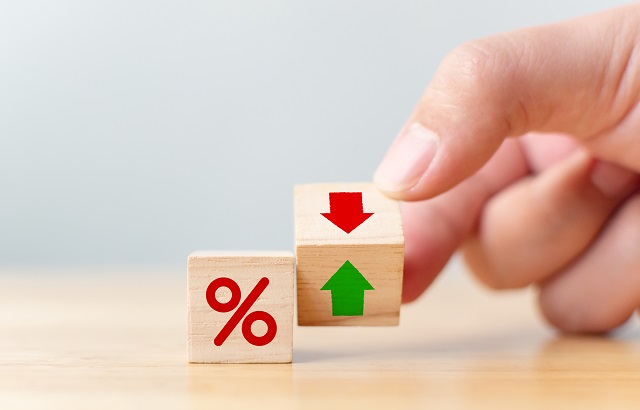The past year has seen the cost of money rise rapidly as interest rates have moved from zero to 5% across the developed world – and markets have not liked it. As interest rates rise, bonds fall in price, reflecting investors’ demand for higher returns in exchange for the increased risk of lending money.
As interest rate expectations have now peaked, we should consider an important question: If interest rates stay higher for longer, does that mean we can’t make good returns from shares and bonds?
The simple answer to this is: no. There is no inherent reason that markets cannot make good returns with higher interest rates.
To disentangle why, we must be clear that what has hurt investment returns over the past year is not that rates are higher, but that they are travelling higher. It is the journey rather than the destination.
Bonds, fall in value because interest rates are rising, but they don’t fall because interest rates remain high. Indeed, high interest rates – now they have arrived – simply require companies and governments to issue bonds with higher interest payments attached.
High rates drive up the long-term expected returns for bonds. Global government bonds held for the next ten years will make an investor close to 4% annually – an increase from zero two years ago. A portfolio of high yield bonds will return close to 7%, assuming a similar default rate as the Global Financial Crisis.
Equities too can deliver long-term returns when interest rates are higher. Investors in shares must be rewarded with what is known as the ‘equity risk premium’ for the additional risk compared to safer investments like bonds or cash.
If the returns from cash and bonds are higher, the equity risk premium also increases, leading to higher nominal equity returns.
Though there is another element to this. If interest rates are so high that they’re harming the economy, this will hurt the earnings of companies, making it harder for equity markets.
Yet the fear amongst bearish investors is not so much that interest rates are crushing the economy, but rather that they’re not.
They worry that the ‘neutral’ interest rate – what economists call R* – has risen significantly and therefore the economy will continue to grow even though rates stay higher – forcing them to stay higher for longer.
It’s possible that R* has risen a little, but probably not as much as people fear. If the current level of interest rates is so high that it’s weakening the economy, then inflation will continue to decline, and rates will fall.
Then, long-term worries about higher interest rates are mute. If higher rates are the new normal, then the economy can cope, and we should not assume it will lead to poor equity returns in the long-term.
We don’t believe we can forecast the future. We believe the world is so inherently unpredictable that our portfolios thrive better by remaining highly diversified, harnessing proven market factors and understanding where the wind is currently blowing.
However, it is also important to dismiss the argument that the future is bleak because of something happening now (such as high interest rates) when this argument is not supported by the evidence.
To test this argument, we can look at the last three times interest rates have peaked in the United States.
The last peak occurred on 1 April 2019. In the year following that peak, both equities and bonds rose in price steadily until hitting a dramatic wall in February 2020, when the pandemic hit and changed everything.
The previous peak was on 28 August 2006. In the year following that peak, the S&P 500 rose more than 5%. In the peak before that, in June 2000, the S&P 500 lost slightly over 10% in the following year as the gloss began to come off technology shares.
So, does this mean that high interest rates make equities go down? No, but it does mean it does not necessarily make them go up either.
The long-term drivers of equity markets here remained unchanged. Markets rise because economies become more productive. And so, pessimism about the future today built on interest rates being ‘higher for longer’ has little basis in fact.
It is far more productive to lift our eyes from the wobbly bicycle wheel just in front of us, focus on the distant road, and recognise that we stand at the start of an enormous wave of just the sort of productivity growth that is the real driver of market returns over the long-term.
Fuelled by a wave of technological innovation from AI that most analysts agree will be just as powerful a driver of innovation as the advent of the modern personal computer in the 1990s.
The key challenge for investors over the next decade may be less about coping with 5% interest rates – something markets have done again and again – and more about profiting from a world that is rapidly changing, whilst avoiding the bubbles that process creates.
This article was written for International Adviser by Charlie Parker, managing director of Albemarle Street Partners.








